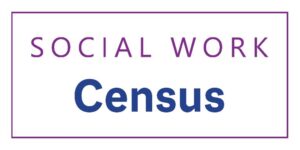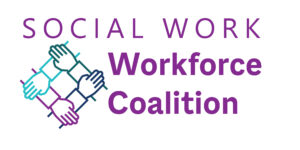Next steps in reenvisioning the exam
The momentum is building. ASWB’s effort to collaboratively reenvision the examination development process is ramping up, and exciting developments are getting under way.
The current work is aimed at making progress on the goals identified in the association’s Strategic Framework 2022–2023—specifically, to “engage with stakeholders to educate and increase transparency around the licensing exams.” That engagement is rooted in collaboration and a commitment to think differently about the exams, from the ways data is collected to how test-takers can best prepare to take the exam.
According to ASWB Senior Director of Examination Services Lavina Harless, fulfilling the association’s strategic goals is a multifaceted effort that requires an all-hands approach. “Our work with fellow social work organizations in the United States and Canada and our outreach to the broader social work community are central to what we are doing, but these are not the only activities,“ Harless said. “These initiatives touch nearly every facet of the exam program. The path forward includes sharing information about how we are ensuring the validity, reliability, and fairness of the ASWB examinations. We want the process to be as transparent and inclusive as possible.”
Building the largest study of social work practice ever undertaken
 ASWB is focused on preparing the way for a 2025 launch of exams based on an updated blueprint. The foundation of that blueprint is what’s known in the testing industry as a practice analysis—essentially, a survey of what social workers need to be able to do and what they need to know their first day on the job. The association has administered seven such studies since the 1980s.
ASWB is focused on preparing the way for a 2025 launch of exams based on an updated blueprint. The foundation of that blueprint is what’s known in the testing industry as a practice analysis—essentially, a survey of what social workers need to be able to do and what they need to know their first day on the job. The association has administered seven such studies since the 1980s.
This time around, ASWB wants to break records by gathering input from the broadest possible sample of social workers, both licensed and unlicensed, in the United States and Canada. The ambitious goal is even reflected in the new name that the association has given the study. While still functioning as a foundational practice analysis, the initiative is being called the Social Work Census because of its reach.
I’m proud of my profession, proud of ASWB’s ongoing commitment to fairness in public protection, and eager to learn from the talent we are gathering, both inside and outside ASWB. It all contributes to the goal of ensuring that we continue to provide an assessment that truly embraces who we are.
Enthusiasm around the effort is building. Recruitment efforts for the Practice Analysis Task Force drew applications from 1000+ social workers. Staff members are now engaged in selecting 40 of those interested individuals—twice as many participants as were included in past task forces—to comprise a group that reflects demographic, geographic, and practice setting diversity.
The selected task force members will provide subject matter expertise to the development of the census, slated to launch in March 2023 during Social Work Month. The task force will use the census results to shape the content outlines for the next iteration of the social work licensing examinations.
Listening, learning, and working together: The Social Work Workforce Coalition
 In one of the most exciting initiatives in the works, ASWB will be sponsoring the first meeting of the Social Work Workforce Coalition, a group of 11 major social work organizations in the United States and Canada. The coalition is convening April 21–23, 2022, in Northern Virginia. The coalition will collaborate to expand the diversity of voices giving input into examination development.
In one of the most exciting initiatives in the works, ASWB will be sponsoring the first meeting of the Social Work Workforce Coalition, a group of 11 major social work organizations in the United States and Canada. The coalition is convening April 21–23, 2022, in Northern Virginia. The coalition will collaborate to expand the diversity of voices giving input into examination development.
The June issue of the association news will include a full update on the inaugural meeting’s outcomes.
The coalition’s first order of business: Creating more opportunities for input
On the agenda for the Social Work Workforce Coalition’s first meeting is suggesting questions and organizations to be included in the community input sessions, which are online focus groups scheduled to be held May through July. These sessions will create opportunities for even more stakeholder input and serve as another way for ASWB to engage with the larger social work community.
At each of the 20 or more community input sessions, facilitators will give social workers and others the opportunity to share their thoughts, concerns, and recommendations about the exams, exam development, and other potential exam or licensing barriers. Topics will include areas of social work practice that have positive impacts on communities and individuals, areas that pose significant risk if mistakes are made, areas that should be assessed on the licensing exams, positive and challenging elements of the exams, and differences in social work topics taught in different types of programs (e.g., historically Black colleges and universities, larger institutions, etc.) The input gathered will help inform the demographic and content questions asked on the Social Work Census.
Potential participants in the community input sessions are still being identified. If you have suggestions for organizations to invite to participate in the community input sessions, please email Lavina Harless at lharless@aswb.org.
Expanding performance data
At the end of the first quarter, ASWB sent an update to members about progress toward releasing exam performance data broken down by demographic group. Work with HumRRO (Human Resources Research Organization) continues, with the goal of providing pass rate data to members and the public in late summer. This will include national trend data over the last 10 years broken down by race, ethnicity, age, primary language, and gender. It will also include 2021 pass rates by demographic group for jurisdictions and individual schools of social work.
ASWB intends to use the results of this data-sharing initiative to inform its overall exam program and to engage in the larger discussion about diversity, equity, and inclusion.
Taking an even deeper dive
ASWB is investing in a series of research studies to better understand the factors that could affect test-taker success on the exam. ASWB’s partners at HumRRO will begin by looking closely at how item writers are recruited and how items are written and developed. They will recommend best practices for item creation and create a framework that aligns with current theories for examining items for microaggressions. Later projects will involve gathering input from individual test-takers to learn about their experience and help ensure that ASWB’s strategies align with test-taker needs.
Looking toward the future
Harless acknowledges that she and her team are keeping many balls in the air. In her view, though, all the effort is worth it. She believes this work is part of an important journey for the profession. “Diversity, equity, and inclusion aren’t just buzzwords. They’re foundational to who we are as social workers and to what ASWB does every day,” Harless said. “I’m proud of my profession, proud of ASWB’s ongoing commitment to fairness in public protection, and eager to learn from the talent we are gathering, both inside and outside of ASWB. It all contributes to the goal of ensuring that we continue to provide an assessment that truly embraces who we are.”
Key dates
| 2022 | |
| April 21–23 | Social Work Workforce Coalition meeting #1 |
| May–July | Community input sessions |
| July 8 | Practice Analysis Oversight Panel meeting #1 |
| August 19 | Social Work Workforce Coalition meeting #2 |
| Late summer | Exam performance data published |
| September 9-10 | Practice Analysis Task Force meeting #1 |
| 2023 | |
| March 1–April 12 | Social Work Census |
| Third quarter | Social Work Workforce Coalition meeting #3 |
| Third quarter | Practice Analysis Task Force meeting #2 |
| Fourth quarter | Volunteer recruitment for examination standard setting |
| 2024 | |
| Second quarter | Social Work Workforce Coalition meeting #4 |
| 2025 | |
| January 1 | Updated exams launch |

